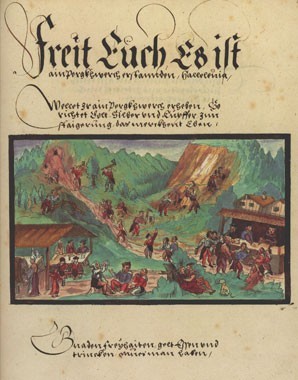Salt sites – Where the Habsburgs produced their salt
Salt was so important for the Habsburg finances that an entire region was given a special status. Other salt mines had to fight increasing competition from the south.
In the early modern period Habsburg salt came from three large salt-works at Hall in Tyrol, Aussee and Hallstatt. It was in particular in the Salzkammergut region – even its name, which means ‘Salt Chamber Estate’, is derived from its function – that the production of salt was expanded considerably in the seventeenth century in response to increasing demand. Until the reform of the so-called ‘Chamber Estates’ in 1783 the Salzkammergut had a special status and was administered by a specially appointed ‘Salt Officer’ (Salzamtmann). Salt was distributed from Gmunden, which had good transport links: the salt mined in Hallstatt and Ischl could be floated down on the River Traun and then trans-shipped for further transport along the routes laid down by the authorities – mostly on waterways. The markets for salt from Aussee were mostly in Croatia and western Hungary. Competition for mined salt came from the south: sea-salt from Trieste could be produced much more cheaply. Even when in the early seventeenth century, a period of political and financial turmoil, salt prices tripled, production at Aussee fell sharply. There was a similar development in the case of the salt-works at Hall in Tyrol, which also faced competition from sea-salt, with production being almost halved.
Falling production meant increasing poverty for people in the salt-producing regions. In Hallein, which was ruled by the Archbishop of Salzburg until the time of the Napoleonic Wars, there were in the sixteenth century some 5,000 people who were directly dependent and a further 24,000 who were indirectly dependent on salt mining and trading. When Hallein salt was increasingly pushed out of the market by Habsburg salt, the population tried to earn a living by means of other activities such as the production of wooden goods.















